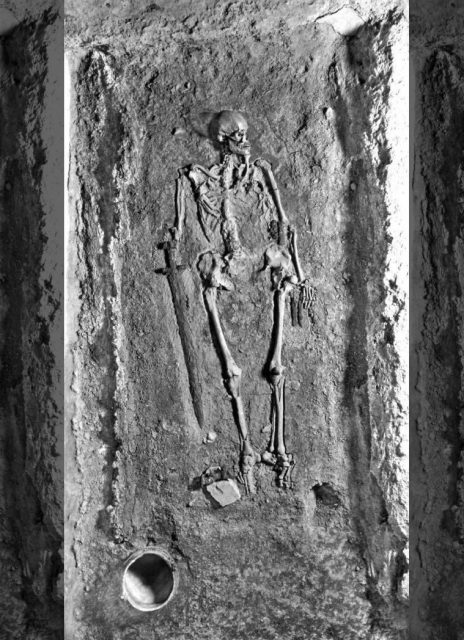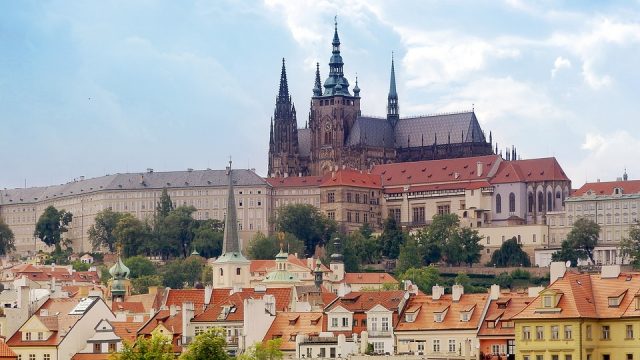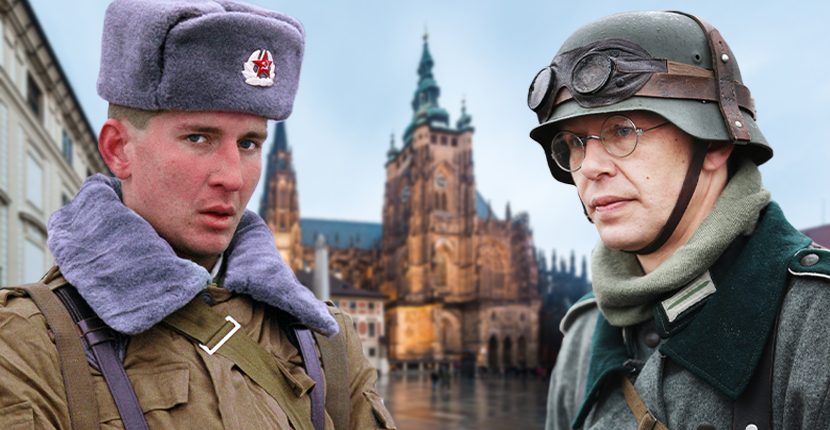A set of remains known as the ‘Prague Castle skeleton’ was discovered in Prague Castle in 1928. The skeleton was old, from the 10th century, and was discovered under the courtyard of the ancient fortress. The remains are male, are presumably belong to a warrior, considering that there were two knives and a sword among the goods he was buried with, according to Fox News.
You would think that, having been interred so long ago, the skeleton would be resting in peace. That was not the case though for he was used as a tool for propaganda by the Nazis, who identified the remains as being of Germanic/Nordic in origin, and by the Soviets, who said the remains belonged to a Slavonic warrior. For a while the skeleton was even part of the Czech Independence Movement. Despite the remains being co-opted several times over the centuries, little about its provenance was ever really learned. Until now.
A team of historical researchers have begun to re-examine the skeleton, which has been out of public view since 2004, hoping to learn more about where he may have come from and who he may have been. The team includes two professors emeritus from Bristol University, and they have recently published an article about their findings in the journal Antiquity.

The remains were first found at the edge of an old burial ground under the courtyard of Prague castle as part of a dig on the grounds under the auspices of the National Museum, who were hoping to uncover the earliest phases of the castle. The burial ground was part of an old hill fort that pre-dated the existing castle and is believed to have been built sometime between 850-1000 AD, according to science website EurekaAlert.

It was first found by Ivan Borovsky, a Ukrainian who escaped to Czechoslovakia in 1920, although he did nothing at the time to make anyone aware of the discovery. By 1939, the German army invaded and Borovsky was accused by the Nazis of trying to hide the truth – that the find was of Germanic origin rather than Slavonic. The idea was that if the remains were German, that demonstrated that the Germans had been around both beyond their borders, and deep in the past. Borovsky was going to publish a book talking about the oldest Slavic pottery in Central Europe until he was threatened with being sent to a camp by the Nazi regime.
When the war was over, the Soviets occupied Czechoslovakia and nearly sent Borovsky to a Siberian Gulag for his previous anti-Communist activity. Borovsky explained that he was forced to take the Pro-German stance with regard to the remains and wrote about them again in 1946, this time with a Soviet slant.
Related Video:
https://youtu.be/jRa5NULML2A
Nicholas Saunders, who is the lead researcher of the current team re-examining the Prague castle skeleton, says that at the present time there are several groups re-examining the fallen warrior and that their re-interpretation offers a new analysis. The skeleton would have lived between the years 800-1000 AD.
The grave goods which were found with the body have been identified as being of a combination of foreign (non-Czech) make, including the sword, the axe, and a fire striker of a type common among Vikings, and various domestic goods, including a bucket and the knives. Saunders went on to say that the sword is particularly significant, since it’s the only one that’s been discovered in 1,500 graves from the early medieval period that have been found at the castle.
Although the sliver of evidence at hand points more to a Viking heritage, it should be noted that this fact doesn’t make an iron-clad identification, as he could have considered himself a Viking, or a Slav from a neighboring area who spoke both Slavonic and Old Norse who used tools from different areas as part of trade (or raid). Saunders made a point of saying that identities during that period of time could be very complex. Either option rules out the propagandist suggestions made by the Nazis or the Soviets, however.
Related Article: Treasure Hunters Believe they have Found the Fabled Amber Room Looted by Nazis
Regardless of how much more the Prague castle skeleton can tell us about who was living in the area at the time, there are also other sets of ancient remains that turn up from time to time and are examined by scientists, and each one contributes its piece to helping us figure out a bit more of humanity’s past.
